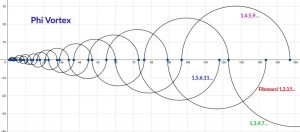It’s fitting that this is Lag B’omer, the celebrated death anniversary of Rabbi Shimon Bar Yochai, for not only did he pass away on the 33rd day of the Omer period, but in his final speech (See Zohar Idra Zuta), he spoke about the 115th psalm.
There are moments when science, religion and spirituality come together. There aren’t as many as there should be because everyone has his own entrenched beliefs. Nevertheless, this is one of those precious moments of harmony, when we can all be in awe, when we can all see and understand that the primordial underlying structure of the physical universe, that the Bible, which is the essence of religion, and that the structure of the spiritual world are all the same, and that this is in no way random.
There is an innate structure to our universe no matter how chaotic it may feel to use, and stepping back we can understand that; after all, if there are a set of natural laws and a set of mathematical (physical) constants then no matter what scale things should look alike and follow the same patterns. But what about an ancient scroll 248 columns long? Should the letters, words, chapters, and verses on that 3330 year old document adhere to the same pattern? If it was written by G-d it might, or by the universe itself it might? But if it were written by man, could it?
Maybe today it could, using computers and software, but 3330 years ago? And if it did, why was the number and date 5778 (2018 ce) singled out? Some of those answers can be found in the Torah portions read during the Omer in the portions surrounding Lag B’Omer.
The Torah or 5 Books of Moses is comprised of several finite and very defined structural elements: the number of words in it, letters, verses, chapters, paragraphs. These haven’t changed in 3330 years, which in Biblical counting as we learn in this week’s portion, Bechukotai, is 66.6 jubilee years (50-year intervals).
The wonderful things about having quantitative numbers verses qualitative words is that we don’t have to interpret them. The total 187 chapters in the Torah divided into the Phi (.61803399) proportion is exactly (187 x .61803399) = 115.566, and 5778, the year prophesied by the tzaddikim for the arrival of the geula (final redemption) in jubilee years (5778/50) is precisely 115.56.
Moreover that 115th chapter is the chapter 25 of the Book of Leviticus, the first chapter in Torah portion Behar, and as it happens not only does Behar have 57 verses in it, but the very next portion (often read together by the way) is Bechukotai with 78 verses. Thus at the 115th chapter in the Torah we have 2 consecutive portions of 57 and 78 verses respectively, a nice allusion to 5778.
As we explain in much greater depth in There’s Nothing 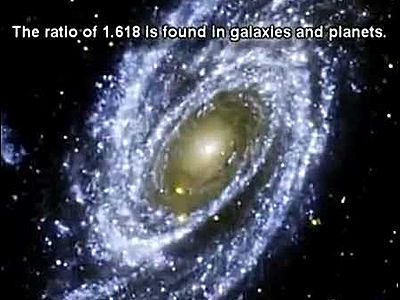 Random About the Universe, the primordial mathematical constant that controls the natural shaping of spirals, from the stars in our galaxy, to the petals on our flowers, to the shape of our seashells and our Trees, and to the growth of our populations is called Phi.
Random About the Universe, the primordial mathematical constant that controls the natural shaping of spirals, from the stars in our galaxy, to the petals on our flowers, to the shape of our seashells and our Trees, and to the growth of our populations is called Phi.
Phi is a specially balanced proportion that extends between the 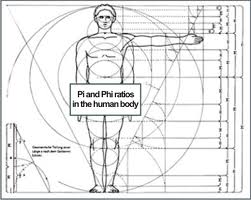 two parts of a segmented whole and then to the whole itself (ie the short length is to the longer one as the longer one is to the entire length).
two parts of a segmented whole and then to the whole itself (ie the short length is to the longer one as the longer one is to the entire length).
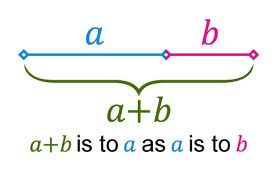
Nature naturally follows this proportion at all turns, and when art  or architecture does too it gives us a beautiful sense of harmony, balance, and well-being. But Phi is not only integral to the existence of the universe but to the design of the Torah as well, as we’ll show below. Moreover, as is covered extensively in There’s Nothing Random About the Universe it is uniquely connected to the number and thus the year 5778 as well.
or architecture does too it gives us a beautiful sense of harmony, balance, and well-being. But Phi is not only integral to the existence of the universe but to the design of the Torah as well, as we’ll show below. Moreover, as is covered extensively in There’s Nothing Random About the Universe it is uniquely connected to the number and thus the year 5778 as well.
There are 5 Books in the Torah, all of varying length, number of chapters, words, letters, verses, etc. and it was written down by hand thousands of years ago, before anyone had ever heard of primordial mathematical constants, or calculators. So it is amazing that the Torah is actually divided into specific segments using the Phi proportion with the first chapter of the Book of Numbers (Bamidbar) being the dividing point in terms of letters, of words, of verses, and of all 3 together, that splits the Torah into two harmonic portions.
Thus:
(Genesis + Exodus + Leviticus)/ (Numbers + Deuteronomy) =
1.61803399 letters, or words, or verses
And
(Numbers + Deuteronomy)/(Genesis + Exodus + Leviticus) = .61803399 letters, or words, or verses
So Lag B’Omer is the 33rd day of the Omer, and the 33rd portion of the Torah is Emor, the very portion where the number of words, letters and verses of the Torah is split into a proportion of .5778.
In summary, the have the portion of Emor connected to Lag B’Omer, and to the .5778 proportion in terms of the number of words, letters and verses in the Torah. Then we have the next two portions in the Torah, Behar and Bechukotai, with 57 and 78 verses respectively as the final two potions in Leviticus, and with their connection to splitting the Torah’s 187 chapters into the exact Phi proportion (115.56) that equations to the number of jubilee years from Adam to Moshiach in 5778. And then in the very next portion, in fact the very next chapter, the first chapter in Numbers, we have the Torah split into the Phi proportion in terms of letters, verses and words.
Now as explained in There’s Nothing Random About the Universe the connection between Phi and also Pi to 5778 is a profound one and Phi18 = 5778.000 precisely so maybe it’s more than coincidental that the gematria of Lag B’Omer is 358, that of Mashiach.
Maybe there is a reason for all this. And maybe we should wake up and stop perusing dates from dead cultures and calendars and start looking at the Bible (Torah) for the answers and timing that was given to us exactly 66.6 jubilee years before 5778 at Mt Sinai and that was spelled out for us in terms that could only be readily understood by our generation, the first to use computers and analytical software.
Thank you once again, Rabbi Shimon. We’ll resume our discussions and revelations about the Future Holy Temple shortly.
Here’s a couple more equations for those so inclined, or so skeptical.
Also, as illustrated in The Genesis Prayer, while the collective 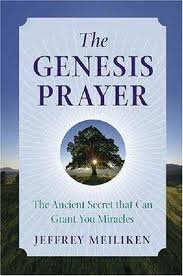 number of words, letters, and verses in the entire Torah = 390,625 = exactly 58, they too as a whole connect with Phi in that:
number of words, letters, and verses in the entire Torah = 390,625 = exactly 58, they too as a whole connect with Phi in that:
(Words, Letters, and Verses in the Entire Torah)/(106 x (square root 1 + the square root of 2))
= 1.618022
Moreover, as is also illustrated in The Genesis Prayer:
The Words, Letters, Verses, Columns and Rows in the Torah = 248000 x 1.61803399
With 248 being the numerical value of Abraham and also of Mercy (Rachem) and also the number of columns in the Torah.
We’ve proven repeatedly in The Genesis Prayer, in There’s  Nothing Random in the Universe and in our articles the purposeful interweaving of Pi (3.1415926358…) in the construction of the Torah. Now we see that the primordial mathematical constant Phi (1.61803399) was likewise programmed in.
Nothing Random in the Universe and in our articles the purposeful interweaving of Pi (3.1415926358…) in the construction of the Torah. Now we see that the primordial mathematical constant Phi (1.61803399) was likewise programmed in.



